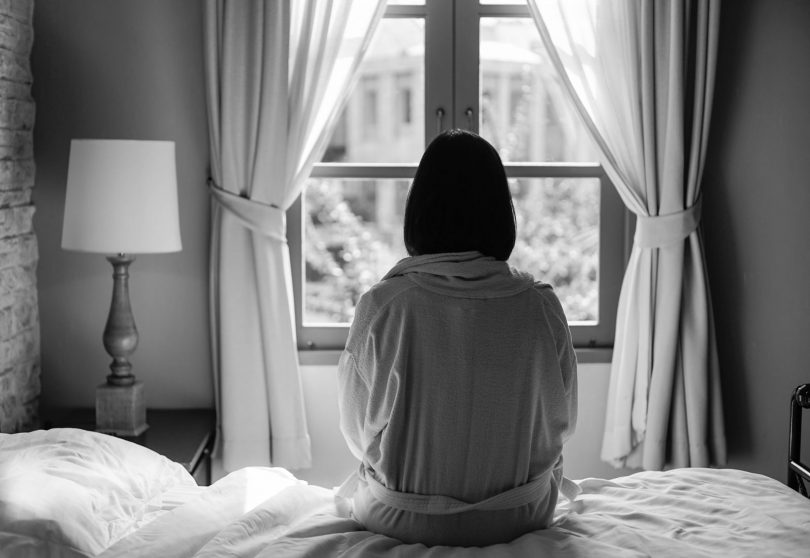If you feel SAD during the winter months, you are not alone.
For most of her adult life, Marie Daniels has detected a change in how she feels when Daylight Saving Time ends in November.
The stay-at-home mom of 4-year-old twin girls will notice a creeping anxiety about running out of time to complete her daily to-do list, as well as a “general blue feeling” when the sun starts setting around 5 p.m. “You can’t do certain things because it’s dark or you feel like it’s late even when it isn’t late,” says Daniels, who lives in Yorktown, Va.
Around this same time of year, Daniels also finds herself with mad cravings for carbs (think comfort foods like mashed potatoes and biscuits and gravy) and, most debilitating, struggles with perpetual exhaustion.
After hearing about Seasonal Affective Disorder or SAD, a form of depression where symptoms typically appear when daylight decreases in the late fall and subside in the spring, Daniels diagnosed herself. She’s never sought treatment, but just keeps forcing herself to go about her daily routine, even when she wants to curl into the fetal position on the couch. “As a parent, you just have to keep pushing through,” she says.
Lesli Hughes, a licensed clinical social worker with TPMG Behavioral Health in Newport News, speculates that many individuals suffering from SAD are like Daniels and never talk to a doctor about their symptoms. Some dismiss their troubles as temporary. Others, she believes, don’t realize they are fighting something more tangible than “the winter blahs.”
“I don’t know if they recognize that they really have it,” Hughes says.
What is SAD?
Psychiatrist Norman Rosenthal first identified and named SAD in 1984 and later pioneered the use of artificial light to help improve symptoms of the inflicted. Researchers haven’t definitively pinned down the cause of the condition, although it could have something to do with seasonal changes interrupting our circadian rhythm — that internal 24-hour clock that regulates our sleeping and waking hours. Those who struggle with SAD may have trouble regulating the neurotransmitter serotonin, may overproduce the hormone melatonin and may produce less vitamin D, according to the National Institute of Mental Health (NIMH).
The American Psychiatric Association estimates that 5 percent of adults in the United States suffer from SAD, with women considerably more likely to experience symptoms than men.
Symptoms vary in severity, from feelings of loneliness and sadness to changes in sleep patterns, particularly excess sleepiness. You might have trouble concentrating, or feel extra irritable, or find yourself having a lower sex drive. What’s worse, those who normally suffer from depression or bipolar disorder may find that their symptoms worsen in the winter, according to the NIMH.
How far a person lives from the equator is thought to influence the likelihood of having SAD. While just 1 percent of those who live in Florida suffer from the condition, the NIMH reports, 9 percent of New England’s population has SAD.
Despite Hampton Roads’ close proximity to the beach, plenty of residents there suffer from SAD, according to Hughes. “Things do change with the amount of time we have during the day with daylight savings,” she says. “We still get bad weather. It’s cold. People do not get out as much … We may not have as much snow, but there are definitely seasonal changes that occur in this area.”
Can anything be done?
Studies show Cognitive Behavioral Therapy, or CBT, where a therapist works with a patient to change negative thoughts and behaviors, can be an effective treatment for SAD. Hughes testifies that CBT has helped many of her clients with seasonal depression.
Since individuals struggling with SAD often isolate themselves, Hughes works with her patients to come up with a plan that keeps them engaged with others. “I encourage people to plan activities that are going to be pleasurable, whether it be inside or outside, that they can do in the winter months,” she says. “That may involve going to visit family. It may involve taking up a new hobby.”
For those who know they suffer from SAD, Hughes recommends going to see a counselor long before Daylight Saving Time ends each fall. “It’s way easier to work on prevention measures than it is to get into [a depressed state] and try to pull yourself out,” she says.
Other treatments for SAD include antidepressants or light therapy, in which patients sit in front of a box that provides a fluorescent light about 20 times greater than average indoor lighting for several minutes each day. Experts warn against using a light box without first consulting a mental health or medical professional.
While SAD may be temporary, the symptoms can be detrimental and shouldn’t be ignored or brushed off. There is help.
“It seems like a short period of time, but when you’re depressed, it feels like the days go by so slowly,” Hughes says. “It’s very treatable.”

